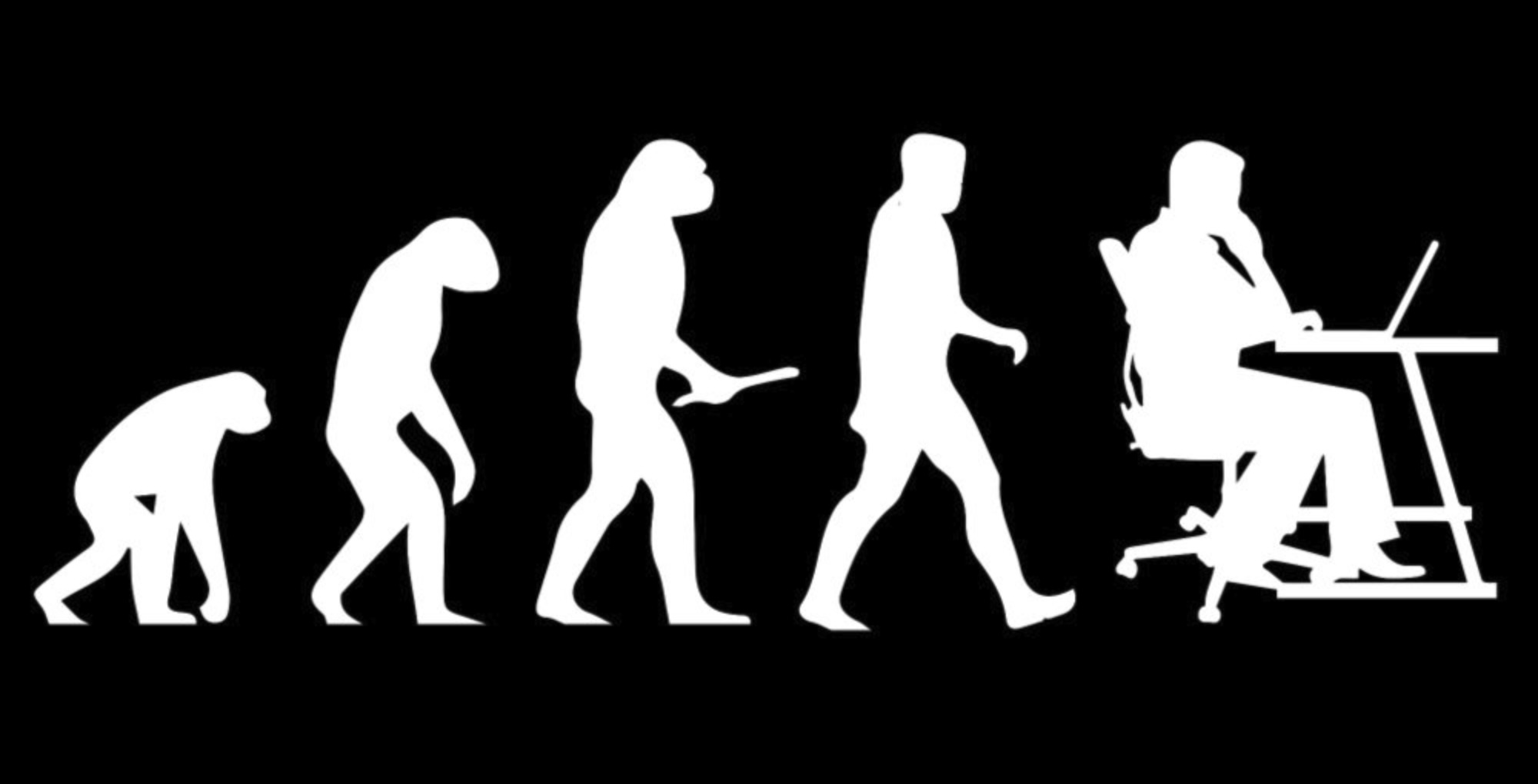Upper/Lower Crossed Syndrome and evolution

I’m on a mission to fix my posture. Not that my posture is terrible, but it could be better. When I see pictures of myself, I’ve noticed that my shoulders tend to round forward a little more than they should. So I’ve started doing these daily posture exercises:
On top of these exercises, I’ve been adding face-pulls at the end of my workouts, and I’ve also tried to avoid hunching and curling my body while sleeping. I’m used to sleeping on my side in a loose fetal position, and now I’m trying to stay on my back with my chest open.
Anyway, today I was talking to my chiropractor about my focus on posture, and he taught me about Upper Crossed Syndrome and Lower Crossed Syndrome. The idea of these syndromes is that you can draw two hypothetical crosses—one through your chest, and one through your hips—and that the four points of these crosses highlight muscles that need strengthening or loosening.
Upper Crossed Syndrome
For Upper Crossed Syndrome, imagine two lines running through your chest from front to back. One line runs from the front of your neck down to your mid-upper back. This is the “weak” line, meaning your deep neck flexors, lower trapezius, and serratus anterior need strengthening. The other line runs from your chest and comes out your upper back. This is the “tight” line, meaning your pectorals, upper trapezius, and levator scapula need to be loosened with stretching.

Here’s a summary of how you can fix Upper Crossed Syndrome:
Strengthen
- Lower trapezius (Face pulls)
- Serratus anterior (Push-up Plus)
- Deep neck flexors (Chin tucks)
Stretch
- Pectorals (Door stretch)
- Upper trapezius (Ear to shoulder)
- Levator scapula (Ear to shoulder, Chicken wing)
Lower Crossed Syndrome
For Lower Crossed Syndrome, imagine two lines running through pelvic girdle from front to back. One line runs from your abs down through your glutes. This is the “weak” line, meaning your abs and glutes need strengthening. The other line runs from your hip flexors up through your lower back. This is the “tight” line, meaning your iliopsoas and erector spinae need to be loosened with stretching.

To fix Lower Crossed Syndrome:
Strengthen
- Abs
- Glutes (Bridge)
Stretch
- Iliopsoas (Cobra, modified quad stretch)
- Errector spinae (Downward dog)
Where evolution comes in
The human body has evolved for hundreds of thousands of years, persisting the traits most favorable for passing our genes on to the next generation. We are adapted to the activities that made our evolutionary ancestors successful: walking, running, climbing, foraging, and hunting. Our musculoskeletal system is primed for these activities down to the smallest details, including the strength and flexibility of each of our muscles relative to one another.
We are not evolved for sitting in a chair and staring at a screen for hours each day. (I’m a software engineer.) This activity totally counter to what our bodies are adapted for, and it takes a toll on our muscle balance. You can trace every symptom from Upper and Lower Crossed Syndrome back to sitting at a desk and looking at a screen:
Upper Crossed Syndrome symptoms and causes
- Weak deep neck flexors. When we lean in to see our screen better, it stretches the muscles on the front of our neck and they lose strength over time.
- Weak lower trapezius and serratus anterior. When we sit with our arms forward on our keyboard, we round our shoulders forward and stretch these muscles, weakening them over time.
- Tight pectorals. Rounded shoulders allows the pectorals to sit in a contracted state most of the time, and they begin to lose flexibility.
- Tight upper trapezius and levator scapulae. When we hunch to look at our screen, we shorten these muscles on the back of our neck, and they lose flexibility.
Lower Crossed Syndrome symptoms and causes
- Weak abs. Sitting for hours a day uses our abs less, and they weaken over time.
- Weak glutes. Sitting puts our glutes in a constant stretched position, and the muscles weaken.
- Tight iliopsoas. When we’re hinged at the hip constantly, this muscle shortens and loses flexibility.
- Tight erector spinae. When we sit, we have a tendency to tilt our pelvis forward, shortening these lower back muscles, which causes them to lose flexbility.
The takeaway
Tracing these symptoms back to their causes may seem obvious, and I’ve heard many people talk about this problem for years, but for some reason I had an “aha” moment today when I thought about it in the context of evolution. It’s not just that sitting at a desk and looking at a screen is bad for us because it’s not “active”, although that is true. It’s bad for us because our bodies are literally not adapted to it.
So it follows that if we’re going to spend a huge portion of our waking hours at a desk, we need to intentionally do things to counter-balance its negative effects. It’s not enough to just exercise all our muscle groups evenly; we need to put more effort into the affected muscle groups than the rest of the body. We need to do regular and consistent damage control if we want our bodies to be what they’re adapted to be.